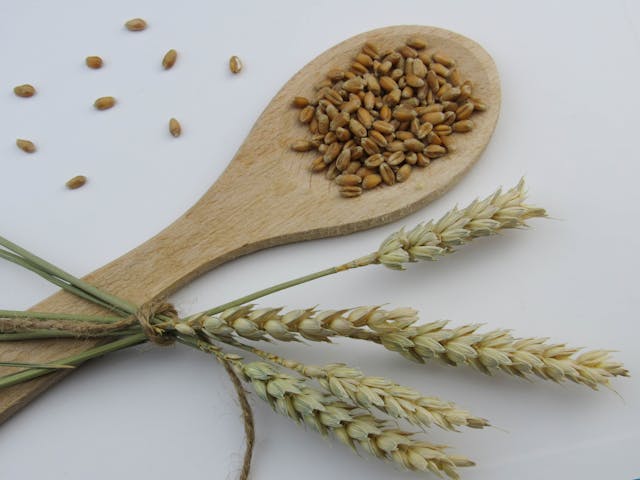Imagine discovering a grain that has nourished civilizations for millennia, yet remains a hidden gem in today’s culinary world. Sorghum, an ancient grain revered in Africa and Asia, is now capturing the attention of health enthusiasts and sustainability advocates worldwide.
A Journey Through Time
In the arid landscapes of Africa, sorghum has been a dietary cornerstone, prized for its resilience against drought and its ability to thrive where other crops falter. Families would gather to enjoy traditional dishes made from sorghum, passing down recipes through generations. Today, this humble grain is making its way into modern kitchens, offering a blend of tradition and nutrition.
Nutritional Powerhouse
Sorghum stands out not only for its rich history but also for its impressive nutritional profile:
-
High in Protein: A single cup of cooked sorghum provides approximately 22 grams of protein, fulfilling a significant portion of the daily recommended intake.
-
Rich in Fiber: This grain offers about 48% of the daily recommended fiber intake per serving, promoting digestive health and aiding in cholesterol management.
-
Packed with Antioxidants: Sorghum contains a variety of phytochemicals, including tannins, phenolic acids, and anthocyanins, which combat oxidative stress and may reduce the risk of chronic diseases.
Health Benefits
Incorporating sorghum into your diet can offer numerous health advantages:
-
Cancer Prevention: Studies suggest that certain compounds in sorghum may inhibit the growth of cancer cells, particularly in the colon.
-
Blood Sugar Regulation: The high fiber content in sorghum helps in stabilizing blood sugar levels, making it a suitable choice for individuals managing diabetes.
-
Gluten-Free Alternative: For those with celiac disease or gluten sensitivity, sorghum offers a nutritious, gluten-free grain option.
Culinary Versatility
Sorghum’s mild flavor and hearty texture make it a versatile ingredient in various dishes:
-
Salads: Add cooked sorghum to salads for a nutritious twist.
-
Baked Goods: Sorghum flour can be used in baking, offering a gluten-free alternative for cakes and cookies.
-
Traditional Dishes: Incorporate sorghum into traditional recipes like ogok-bap, a Korean five-grain rice dish.
Sustainable Farming
Beyond its nutritional benefits, sorghum is celebrated for its environmental resilience:
-
Drought Resistance: Sorghum requires less water than many other crops, making it a sustainable choice in water-scarce regions.
-
Soil Health: Its deep root system helps prevent soil erosion and improves soil fertility.
Incorporating Sorghum into Your Diet
Ready to give sorghum a try? Here’s a simple recipe to get you started:
Mediterranean Sorghum Salad
Ingredients:
-
1 cup whole-grain sorghum
-
4 cups water
-
1 can chickpeas, rinsed and drained
-
1 English cucumber, chopped
-
1/3 cup toasted walnuts, chopped
-
3 green onions, chopped
-
1 cup cherry tomatoes, halved
-
1 cup chopped fresh parsley
-
1/2 cup crumbled feta cheese
Instructions:
-
Cook sorghum in water until tender, about 50-60 minutes.
-
In a large bowl, combine cooked sorghum with remaining ingredients.
-
Toss with your favorite dressing and serve chilled.
Is Sorghum Better Than Oats?
Both sorghum and oats are nutritious grains, each offering unique benefits. Here’s a comparison based on a 1/4 cup serving:
| Nutrient | Sorghum Flour | Oat Flour |
|---|---|---|
| Calories | 130 | 120 |
| Carbohydrates | 28g | 22g |
| Fiber | 2g | 3g |
| Protein | 3g | 4g |
| Fat | 0.5g | 2g |
Source: The Coconut Mama
Oat flour has slightly fewer calories and more fiber and protein per serving compared to sorghum flour. However, sorghum is rich in antioxidants and is naturally gluten-free, making it suitable for those with gluten sensitivities. The choice between the two depends on individual dietary needs and health goals.
Sorghum Benefits for Skin
Sorghum is packed with antioxidants, including phenolic compounds, which combat oxidative stress and may slow skin aging. These antioxidants help protect skin cells from damage caused by free radicals, potentially reducing wrinkles and improving skin texture. Additionally, the B vitamins in sorghum support overall skin health by promoting cell regeneration and repair.
Sorghum Benefits for Weight Loss
Incorporating sorghum into your diet can aid in weight management. Its high fiber content promotes satiety, helping to control appetite and reduce overall calorie intake. Moreover, certain compounds in sorghum, such as tannins, have been reported to reduce caloric availability, potentially assisting in weight loss efforts. A study highlighted that sorghum consumption reduced body fat percentage and increased dietary fiber intake compared to wheat consumption.
Sorghum Benefits for Hair
The rich nutrient profile of sorghum, including B vitamins and essential minerals like magnesium and zinc, supports healthy hair growth. These nutrients play crucial roles in hair follicle development and maintenance. Regular consumption of sorghum can provide the necessary building blocks for strong, lustrous hair.
Sorghum Benefits for Diabetes
Sorghum’s nutritional properties make it a favorable grain for individuals managing diabetes. Its high fiber content aids in slowing carbohydrate digestion and absorption, leading to more stable blood sugar levels. Additionally, research has shown that a diet including sorghum can help protect against oxidative damage associated with diabetes.
However, it’s essential to monitor portion sizes and consult with a healthcare professional to ensure it fits within your dietary plan.
Embracing sorghum not only diversifies your diet but also connects you to an ancient grain with a rich heritage and a promising future.


